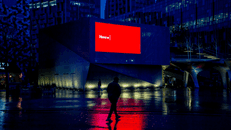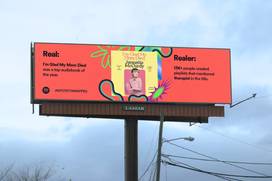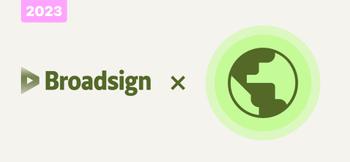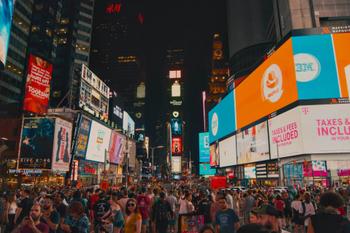Out-of-home (OOH) advertising, also known as outdoor advertising, refers to billboards, signage, or other highly visual, highly impactful media displayed in public spaces people walk past and drive by every day. It also represents one of the biggest opportunities for advertisers to connect with their target audience outside the crowded context of their personal devices.
According to Solomon Partners’ 2023 benchmark report, out-of-home advertising produces the highest levels of consumer recall compared to other media channels — surpassing traditional mediums like print, podcasts/radio, and television, as well as online executions via desktop and mobile. That means people are taking notice of OOH media at a time when rising competition and an already crowded ad landscape have made it more difficult than ever to stay top of mind.
In our 20+ years of OOH experience, we’ve learned a thing or two about this exciting (and continuously evolving) advertising medium. To make it easy for you, we’ve divided this blog into sections so you can easily find what you need.
- Types of OOH advertising
- Benefits of out-of-home advertising
- What’s possible with today’s OOH
- Examples of OOH in action
Types of OOH advertising
You might picture huge roadside billboards when thinking about outdoor advertising — and while that is a key part of it, one of the fun things about OOH advertising is the sheer variety that’s found within the space. From small static posters to digital screens triple the size of a regulation football field, today’s marketers have an incredible array of opportunities to connect with audiences in the OOH space.
OOH vs. DOOH
Broadly speaking, today’s out-of-home advertising falls into one of two categories: traditional (i.e., static) OOH or digital OOH.
As you might guess, digital out-of-home (DOOH) is a digital subset of out-of-home advertising. Dynamic, data-driven, and capable of delivering measurable impact and proven results, DOOH refers to any digital media that appears in environments accessible to the public. This includes digital billboards, menu boards, and screens found at retail stores, inside elevators, or connected to public EV charging stations.
Meanwhile, traditional OOH persists as a powerful and effective advertising medium that can provide advertisers with a competitive edge. With their eye-catching large formats, long-term exposure, and strategic placements, static billboards continue to thrive in the digital age.
Traditional (i.e. static) OOH
Advantages:
- 100% share of voice
- Always on
- Long-term exposure
- CPM is typically significantly lower than other formats
- Increased creativity, as many billboard companies allow for design and messaging that extend past hard dimensions
Considerations:
- Activation/installation can be time-consuming and costly
- Not easy to update or swap out an advertisement (and doing so will incur additional costs)
- Over time, ads may lose their novelty or impact
- Static billboards may require maintenance due to environmental changes
Digital OOH (DOOH)
Advantages:
- Support for multiple ad formats (video, motion graphics, dynamic HTML5 content, etc.)
- Quick, cost-effective turnaround
- Easy to make real-time updates to ad creative
- Factors such as weather, news alerts, or traffic patterns can serve as triggers to run specialized ads
- Ability to be bought programmatically (pDOOH)
Considerations:
- Exposure time is shared amongst other advertisers
- Most ads only remain visible for 8-10 seconds
- Can be more expensive to purchase than static billboards
Static and digital billboards and various other out-of-home media formats have demonstrated their effectiveness in today’s diverse advertising landscape. The crucial consideration comes down to determining which type of OOH advertising best suits your particular circumstances, desired outcomes, and overall campaign goals.
Media formats
The Out of Home Advertising Association of America (OAAA) categorizes standard OOH media formats into:
- Billboards (like Bulletins and Posters)
- Street furniture (like Bus Shelters and Urban Panels)
- Transit (like Airports and Taxis)
- Place-based (like Malls and Restaurants)
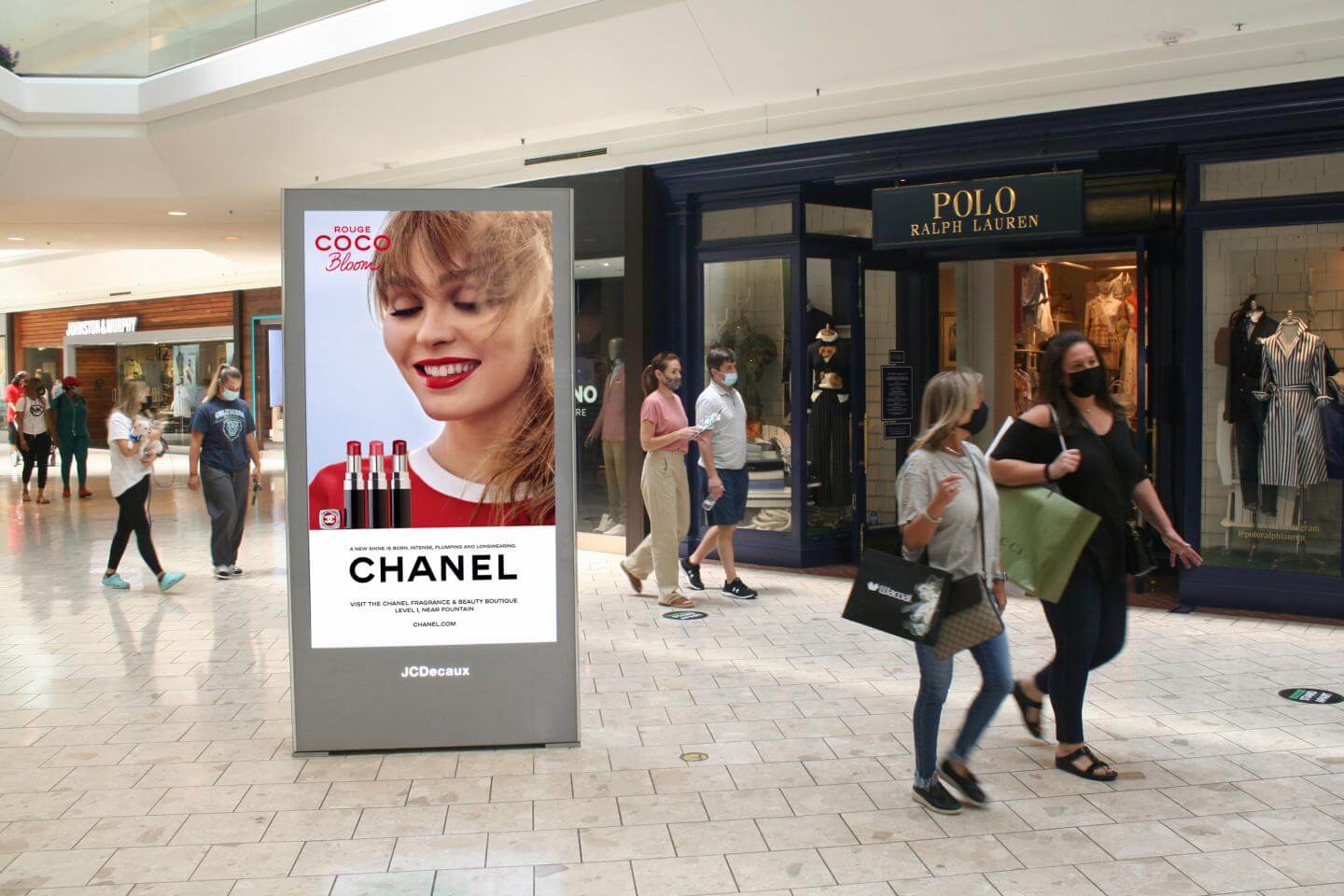
Benefits of out-of-home advertising
OOH advertising offers several benefits that make it a valuable option for marketers and brand advertisers. Here are some key points to consider if you’re thinking about incorporating OOH into your larger marketing strategy:
High visibility and reach: Nine in ten U.S. adults (88%) notice OOH ads, and nearly 80% have engaged with an OOH ad in the past 60 days, according to a recent OAAA and Morning Consult survey. OOH advertising can be strategically placed in high-traffic areas, such as city centers, highways, and transit hubs, to maximize reach and target a large and diverse audience — including those who are difficult to reach through other media channels.
Brand safety and environment: Free from the risks of ad fraud and brand safety issues associated with online advertising, high-quality, well-placed OOH ads can actually enhance brand perception and credibility, contributing to a positive brand association. A new Harris Poll study found that a staggering 73% of consumers view digital out-of-home ads favorably, significantly surpassing other forms of ad media such as television/video (50%), social media (48%), online (37%), audio (32%), and print (31%).
Targeted placement: OOH advertising locations can be selected to reach specific demographics based on the area’s typical foot or vehicle traffic. Additionally, ads can be placed in contexts where they’re most relevant, like near shopping centers, business districts, or entertainment venues. The same Harris Poll study found that 51% of consumers who noticed directional DOOH ads subsequently visited the advertised business — and the overwhelming majority (93%) of those who visited a business after viewing the ads ended up making some kind of purchase.
Drives online activity: OOH is the most effective offline medium in driving online activity and can enhance the effectiveness of other advertising channels by reinforcing messaging seen elsewhere, such as on TV or online. Repeated exposure in different contexts (e.g., during the daily commute and on social media) is also shown to maximize your campaign impact and improve brand recognition and recall.
Cost-effectiveness: Per Solomon Partners’ 2023 Media Trends Report, the average CPM of an OOH ad in the U.S. market ranges between USD$2 and USD$9 per thousand impressions — a relative bargain compared to other advertising channels like broadcast TV (where ads can have a CPM of anywhere between USD$16-45) and device-based digital video (with the average cost of mobile and desktop digital video ads climbing to USD$40 on the higher end).
What’s possible with today’s OOH
In 2024, OOH is a fast-growing ad medium and an important part of a full-funnel marketing mix — especially as DOOH advances and its programmatic capabilities continue to evolve.
Flexible buying options
Like online digital advertising, digital out-of-home advertising is now available for purchase programmatically. This means that ad slots are made available for automated purchase based on the criteria selected by the buyer.
Programmatic digital out-of-home, or pDOOH, can be used to target a specific audience demographic, or it can be used to purchase ads based on ambient conditions – such as the weather, live sports scores, time of day, etc. Unlike classic or directly purchased DOOH, pDOOH allows advertisers to buy inventory in near real-time without the need for upfront commitments or predefined schedules. This provides a high degree of flexibility and responsiveness, minimizing lead times and making optimizing ad placements and adjusting spending on the fly easier.
While programmatic transacting isn’t necessarily a prerequisite for all of the out-of-home advertising possibilities outlined below, the streamlined workflows of today’s demand-side platforms (DSPs) are one of the many factors driving pDOOH usage amongst marketers. Others include improved third-party data integration, increased operational efficiency, enhanced reach, and more in-depth campaign targeting and measurement capabilities.
There’s a lot to talk about with programmatic outdoor advertising. If you’re interested in digging into this topic more, check out our eBook, The Media Buyer’s Guide to Programmatic Digital Out-of-Home, to learn all about it. Otherwise, read on to find out more about the exciting possibilities of today’s OOH advertising.
Enhanced targeting and personalization
The advent of digital out-of-home advertising has significantly enhanced personalization and targeting capabilities. Marketers can now leverage data to target specific demographics and deliver personalized messages based on the location and behavior of the audience. And in an increasingly cluttered media landscape, activating OOH at the right place and time to reach your desired demographic is key.
Examples of data sources marketers can use to run the most effective OOH campaigns possible include:
- Mobile location data: Leveraging GPS and mobile data, advertisers can target specific demographics and points of interest (POI) to deliver personalized messages based on the location and behavior of the audience.
- First-party customer data: Marketers can also combine first-party data with their OOH strategy to better understand the preferences and behavior of their target audience.
Many OOH networks integrate with mobile data providers to get a historical view of audience demographics and movement around their displays. Advertisers can use this data to help decide which locations are the best fit for their campaign. For example, a brand promoting noise-canceling headphones might want to place ads near locations where students spend time, like universities, libraries, public transit, and gyms.
Marketers can also combine first-party data within their OOH strategy to reach audiences with contextually relevant ads. One such advertising approach that’s gained popularity over the years is the rise of retail media networks (RMNs). Retailers (and by extension, their RMNs) have access to large amounts of first-party customer data through their owned and operated digital platforms.
While they’ve traditionally operated within digital retail environments, RMNs are now diversifying to include offline channels like OOH to catch consumer attention in-store. A primary benefit is that this data can be used across various channels, such as digital display, CTV, social media, and DOOH. This allows marketers to deliver hyper-personalized offerings through online and email campaigns, loyalty programs, in-store offers, and more.
Dynamic content and real-time updates
Improvements in real-time data integration have revolutionized OOH advertising, allowing brands to dynamically alter their messaging in response to immediate conditions and events. Marketers can now adapt their digital out-of-home messages on the fly, responding to changing conditions and audience needs. This capability ensures that advertisements remain relevant, timely, and engaging, enabling advertisers to deliver timely, impactful messages that enhance engagement and drive results.
Here are several ways real-time updates are transforming OOH advertising:
- Dynamic content delivery: Today, it’s possible to have digital out-of-home (DOOH) displays automatically change content in response to all manner of real-time data triggers, enabling engaging real-time interactions with the people standing in front of them.
- Real-time campaign adjustments: Marketers can adjust campaigns in real-time based on performance data, optimizing ad spend, and improving ROI.
Dynamic DOOH advertising enables brands to capitalize on the power of personalization while reaching a more engaged audience through contextual conversations with technology. In fact, research has shown that using contextually relevant (i.e., dynamic) DOOH campaigns increases advertising awareness by +18%.
The potential triggers for a dynamic DOOH campaign are essentially limitless. Everything from weather data to financial marketing data, to sports results, to on-location visual sensors can be used to trigger changes to on-screen content. Whatever the data source, the goal is always to draw on that data to provide a more appealing, more relevant content experience.
Today’s marketers can also leverage technology and real-time data analytics to continuously optimize ad performance over the course of a campaign. This agile approach ensures that advertising campaigns remain relevant, cost-effective, and impactful by responding instantly to changing conditions and audience behaviours.
Cross-channel integration
Recent technological advancements have significantly enhanced cross-channel integration capabilities for OOH advertising, making it more interconnected with digital, social, and mobile channels.
In addition to creating more cohesive, engaging, and effective advertising campaigns, marketers can use cross-channel analytics to track the performance of OOH campaigns alongside other media, offering a comprehensive view of campaign effectiveness and ROI. Improved analytics tools allow for better measurement and attribution of OOH ad impact in conjunction with other media, providing a holistic understanding of campaign effectiveness.
READ ALSO: 6 Steps for Integrating Digital Out-of-Home in Your Omnichannel Marketing Strategy
Examples of OOH in action
Need some inspiration? Here are some examples of how different brands have leveraged the medium.
Sea-Doo: Increasing Purchase Consideration in Florida
To reach its core audience of personal watercraft, pontoon, and fishing enthusiasts, Sea-Doo launched a programmatic DOOH campaign in Florida alongside other channels like search and social media that resulted in a +144% lift in purchase consideration. The campaign also provided a major boost in brand perception, creating a +130% lift in positive brand image
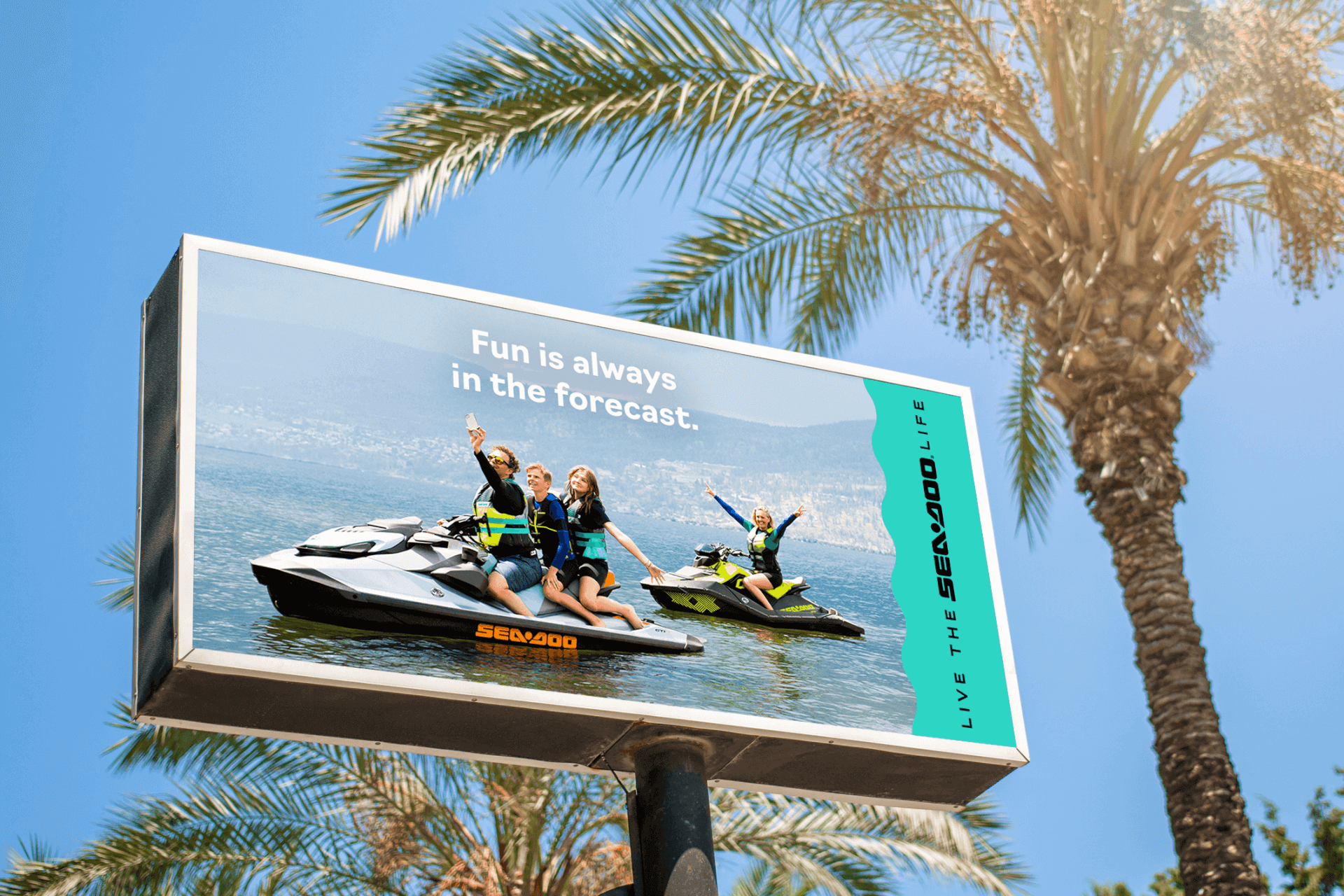
H&M Portugal: Boosting brand image and ad recall
When major international clothing retailer H&M wanted to drive brand awareness and increase sales of its fashion collection across key Portuguese markets, the brand turned to programmatic DOOH to support its omnichannel campaign for fashion-conscious consumers. Video ads promoting the seasonal clothing collection were shown on screens in malls, subways, and train stations, resulting in a +81% lift in brand image.
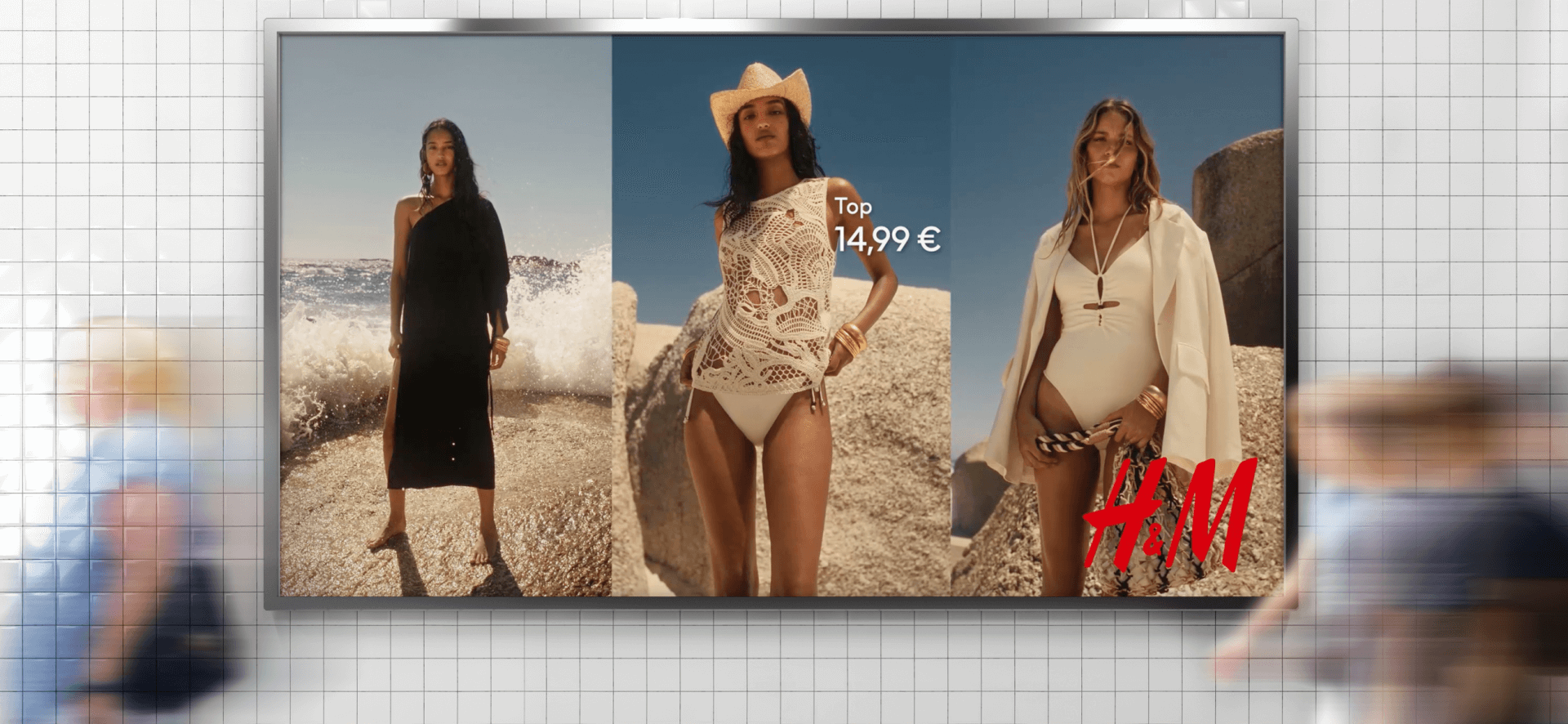
Want to see how major brands and advertisers are integrating outdoor and out-of-home advertising into their media strategies?
Check out our collection of case studies for inspiration!


